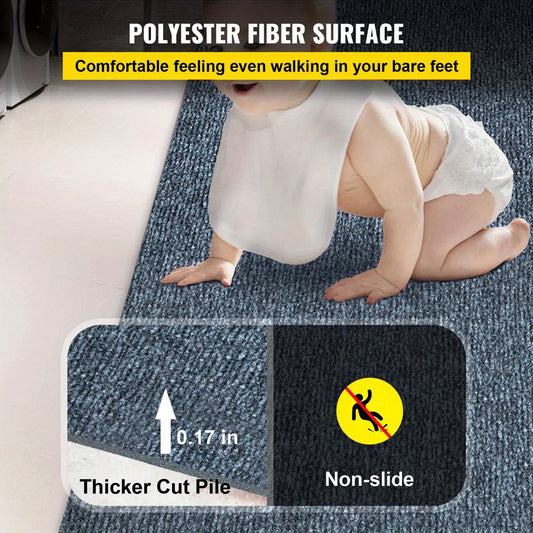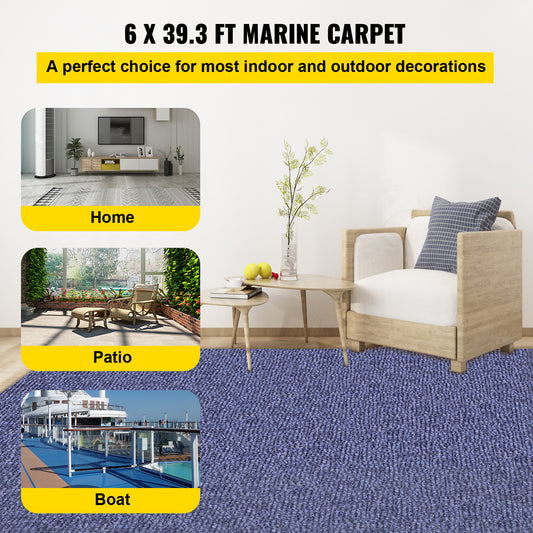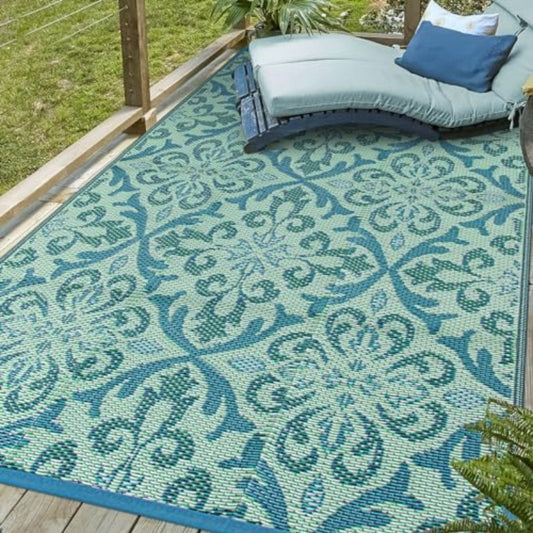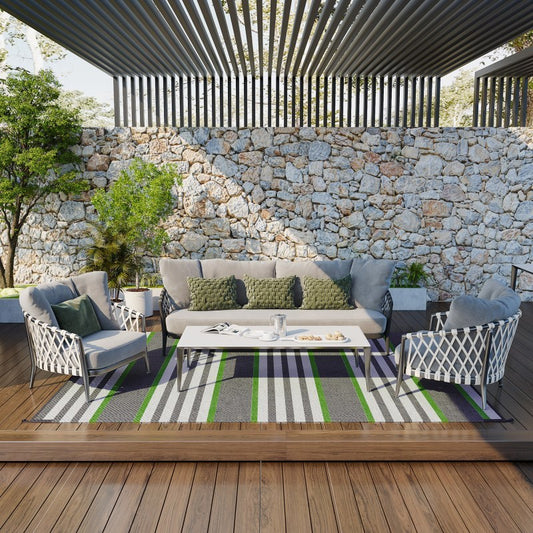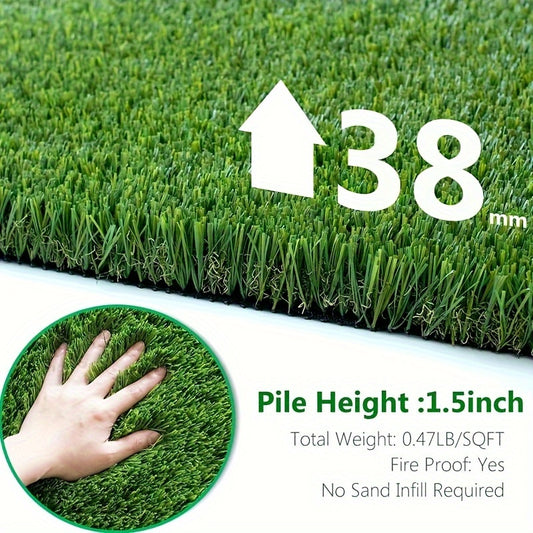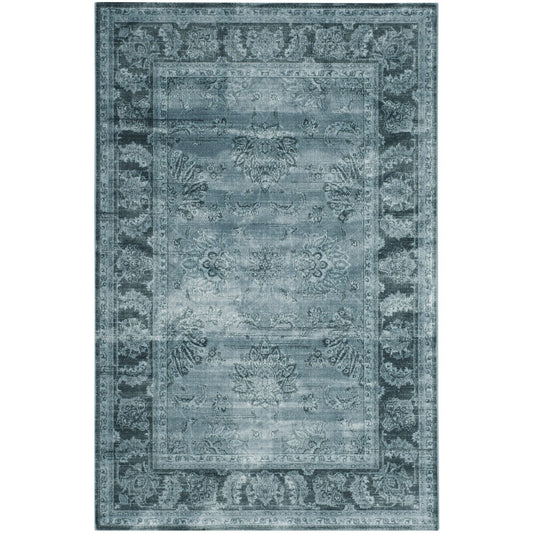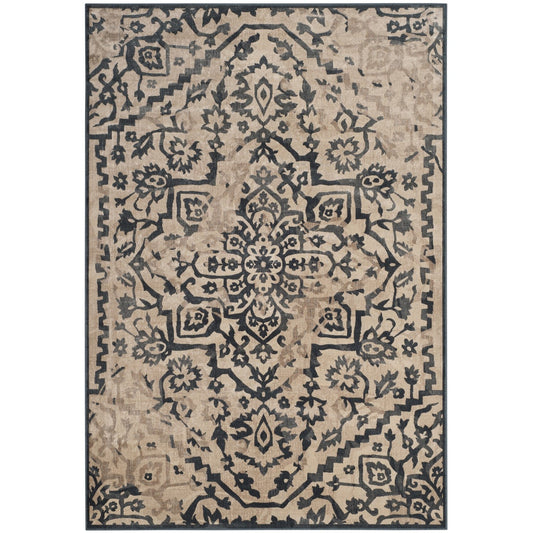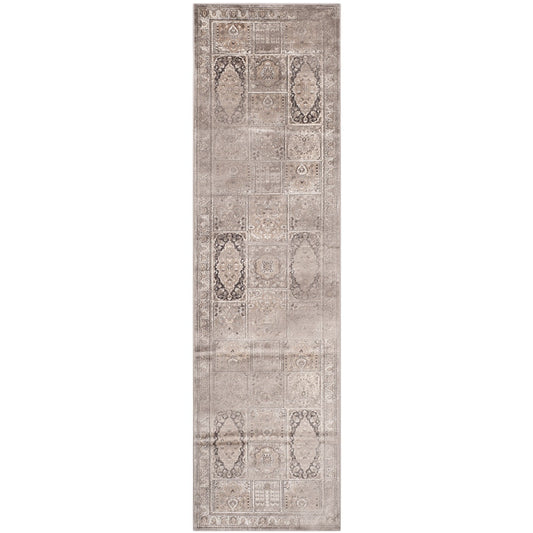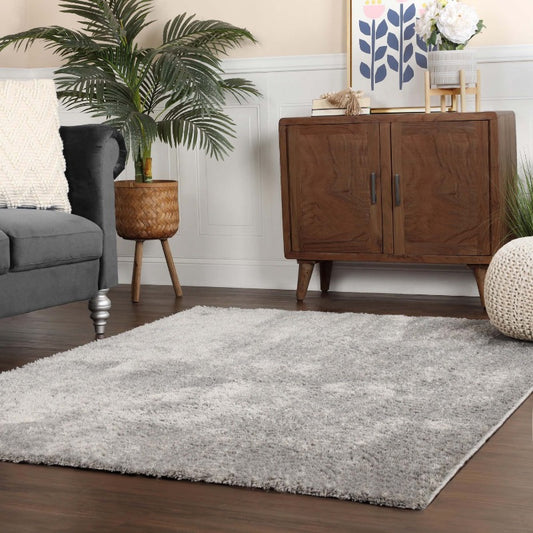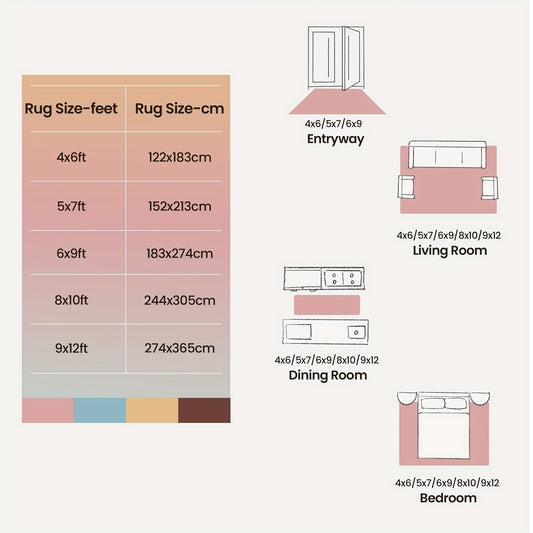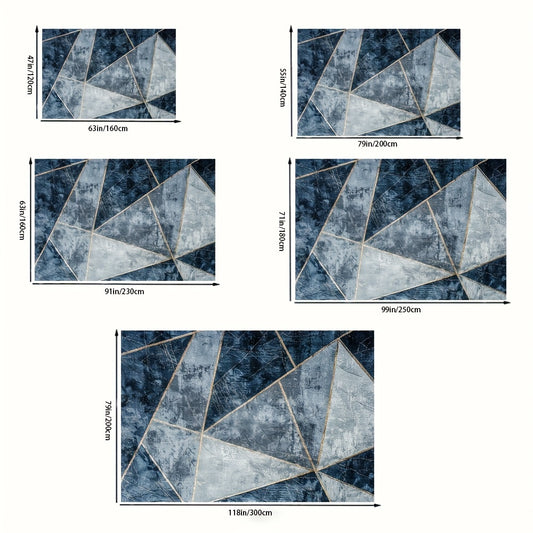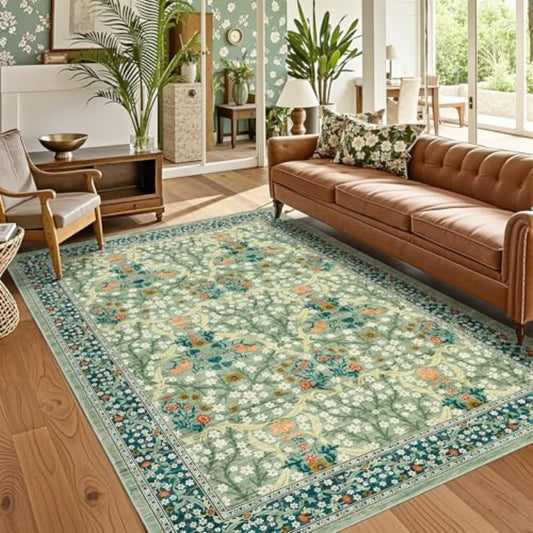Luxury Editorial Product Guide To Carpets
The Artistry Of Carpets In Luxury Interiors
Carpets are more than floor coverings; they are the foundation upon which luxury interiors are built. Across centuries, they have symbolized sophistication, cultural heritage, and refined taste. From palatial courts to modern penthouses, carpets have consistently embodied a blend of artistry and functionality. Within today’s global luxury landscape, Fabulive’s curated carpet collection stands at the intersection of tradition and innovation, offering pieces that are as timeless as they are contemporary.
Luxury carpets anchor interiors by harmonizing space, texture, and ambiance. They invite tactile interaction, absorbing footsteps while softening acoustics. The interplay of fibers, dyes, and weaving techniques creates visual symphonies underfoot. In curating this collection, Fabulive ensures that every carpet tells a story—of heritage artisanship, sustainable sourcing, and modern design intelligence.
Design Philosophy Of Luxury Carpets
The design of a carpet is a deliberate narrative. It is a composition of geometry, color, and texture woven into a textile canvas. Luxury carpets distinguish themselves through precision in pattern, balance in proportion, and depth in symbolism.
Traditional motifs often carry cultural significance—medallions, florals, and calligraphic elements that symbolize prosperity, unity, or spiritual grounding. Contemporary carpets reinterpret these motifs through minimalist grids, abstract brushstrokes, or sculptural textures. Both approaches meet in Fabulive’s selection, where heritage patterns coexist with avant-garde design language.
Scale plays a critical role in design philosophy. A central medallion carpet anchors grand halls, while all-over patterns enhance intimate living rooms. Neutral palettes invite serenity, whereas bold color stories inject dynamism. Fabulive positions its carpets as adaptable design investments, suited for both classic and modern interiors.
Materials That Define Luxury
At the heart of every carpet lies its material composition. Fibers determine not only tactile experience but also durability, sustainability, and long-term value. Luxury carpets favor natural fibers whose performance is matched by their aesthetic depth.
-
Wool: Renowned for softness, resilience, and natural stain resistance, wool remains the gold standard of carpet material.
-
Silk: Adds iridescent sheen and unparalleled delicacy, often used in highlights or entire weaves for elite collections.
-
Cotton: Valued as a durable foundation fiber, frequently used in warp and weft construction.
-
Bamboo Silk: A sustainable innovation, combining sheen with eco-conscious sourcing.
-
Jute & Sisal: Natural plant fibers that offer rustic charm and texture, often used in modern eco-luxury interiors.
-
Blended Fibers: High-end blends merge durability with elegance, ensuring carpets adapt to diverse lifestyles.
Fabulive prioritizes material integrity by sourcing fibers that are ethically harvested and processed. Each carpet becomes a statement not only of design refinement but also of ecological responsibility.
Functionality Beyond Aesthetic Appeal
The functionality of carpets extends beyond ornamentation. They define zones within open-plan interiors, provide warmth in colder climates, and improve acoustics in expansive spaces. Carpets reduce echoes, soften ambient noise, and create sensory comfort, turning living areas into havens of serenity.
Functionality also includes durability. High-traffic carpets must withstand constant use without sacrificing beauty. Hand-knotted wool carpets, for instance, resist wear while aging gracefully, acquiring patina that enriches their charm. Conversely, silk carpets, though less suited for heavy use, provide unmatched luxury in formal spaces.
Fabulive ensures its carpets meet diverse functional needs—whether for family living rooms, executive offices, or ceremonial halls. By balancing resilience with artistry, the collection caters to lifestyles where practicality cannot be divorced from elegance.
Cultural Relevance Of Carpets
Carpets have long served as cultural artifacts, reflecting the values and aesthetics of civilizations. Historically, they symbolized hospitality, prestige, and artistry. Patterns were not random; they encoded tribal lineage, regional identity, and even philosophical thought.
Today, carpets continue to embody cultural resonance. They are displayed as wall art, gifted during life milestones, and collected as heritage assets. Fabulive honors this cultural depth by curating carpets that respect traditional motifs while engaging with modern storytelling. Each piece becomes both a functional furnishing and a cultural statement, situating its owner within a continuum of heritage and taste.
Carpets As Anchors Of Personal Style
A carpet is not simply a furnishing—it is an extension of personal style. Minimalist homeowners may choose monochrome wool carpets with subtle texture, communicating restraint and serenity. Those inclined toward drama may favor silk carpets with bold medallions, broadcasting opulence.
Carpets influence the tone of an entire room. A neutral carpet allows furniture and art to shine, while a patterned piece commands attention, becoming the focal point of design. The adaptability of carpets empowers homeowners to articulate identity through interiors.
Fabulive emphasizes this personalization by offering a wide range of designs, from understated elegance to bold artistry. The brand recognizes that luxury is not uniform but curated, reflecting the individuality of each client.
The Evolution Of Carpet Embellishment
Carpets, by their very construction, are embellishments in textile form. Beyond their woven structure, many luxury carpets integrate advanced embellishment techniques. Hand-knotting produces depth in pile, creating sculptural surfaces. Carving adds three-dimensional texture, while metallic threads introduce glimmer under light.
Contemporary embellishments extend to digital dyeing, abstract brush effects, and hand-tufted overlays. These techniques transform carpets into hybrid canvases—part textile, part art. Fabulive curates carpets that celebrate these innovations without compromising on timeless usability.
Carpets In Global Design Narratives
The role of carpets in global interior design cannot be overstated. They bridge cultures, finding place in Scandinavian minimalism, Middle Eastern opulence, and Asian contemporary aesthetics. Their adaptability has made them central to both modern penthouses and heritage estates.
In cosmopolitan cities, carpets serve as statements of worldliness—symbols of travel, heritage, and cultural appreciation. Collectors often see carpets as portable artworks, appreciating them for both function and heritage value. Fabulive situates its collection within this global discourse, offering carpets that resonate across continents while retaining artisanal integrity.
Seasonal Approaches To Carpet Use
Carpets also respond to seasonal living. In colder months, plush wool or silk-blend carpets provide warmth and tactile luxury. During warmer seasons, lightweight cotton or jute options create breathable comfort while retaining elegance. Color palettes adapt too—light neutrals in summer evoke freshness, while jewel tones in winter add depth and coziness.
Fabulive integrates seasonal considerations into its curation, ensuring clients can rotate carpets to maintain harmony with changing climates. This approach enhances both practicality and aesthetic continuity.
The Role Of Carpets In Wellness-Centric Living
In luxury interiors, wellness and comfort have become as important as aesthetics. Carpets contribute significantly to this ethos. Their cushioning properties ease pressure on joints, while their acoustic absorption reduces stress-inducing noise. Natural fibers like wool also regulate humidity, contributing to healthier indoor air quality.
For Fabulive, wellness is an integral dimension of carpet design. By prioritizing natural fibers, ethical production, and tactile softness, the brand ensures its carpets enhance not only interiors but also quality of life.
Styling Strategies For Carpets
Styling carpets within a luxury interior requires an understanding of balance, scale, and harmony. A carpet is not an afterthought—it is often the foundation around which furniture and décor are built. The way it anchors space defines the flow and perception of an entire room.
The first principle is scale. A carpet should neither overwhelm a room nor appear diminutive. Oversized carpets create expansiveness, uniting furniture within one visual field, while smaller rugs can define intimate corners. Placement under key furniture—such as a sofa or dining table—ensures visual cohesion.
The second principle is contrast. A patterned carpet can offset minimalist furniture, while a neutral carpet calms eclectic interiors. Fabulive emphasizes this strategic balance, curating carpets that enhance, rather than compete with, existing décor.
Finally, layering has become a hallmark of contemporary styling. Placing smaller accent carpets over larger neutral bases creates depth and visual intrigue. Through careful styling, carpets evolve from accessories into protagonists of design.
Carpets In Different Rooms Of The Home
-
Living Rooms: The heart of social interaction, living rooms demand carpets that combine comfort with statement design. Large wool or silk-blend carpets with central medallions or geometric patterns ground furniture and draw guests into a cohesive space.
-
Dining Rooms: Carpets here must balance elegance with functionality. Flat-weave or low-pile carpets ensure easy cleaning, while bold designs frame dining tables, turning meals into curated experiences.
-
Bedrooms: Soft textures dominate. Plush wool or silk carpets provide tactile comfort underfoot, creating sanctuaries of rest. Neutral tones enhance serenity, while subtle patterns introduce intimacy.
-
Home Offices: Carpets in workspaces enhance acoustics and define professionalism. Minimalist designs in muted palettes establish calm focus, while geometric patterns inject energy.
-
Hallways & Transitional Spaces: Narrow runners guide movement, infusing character into overlooked areas. Fabulive’s runners are crafted with durability in mind, ensuring beauty withstands high traffic.
Each room tells a different story, and Fabulive’s collection ensures carpets are not one-size-fits-all but tailored to context.
Contemporary Trends In Carpet Design
Luxury carpet design continuously evolves, responding to global aesthetic currents.
-
Minimalism: Subtle textures in monochrome palettes resonate with modern interiors, offering quiet sophistication.
-
Abstract Expression: Carpets resembling painted canvases blur the line between art and furnishing.
-
Sculptural Surfaces: Carved piles and raised weaves create tactile depth, inviting touch.
-
Sustainable Innovation: Eco-conscious fibers like bamboo silk or recycled blends dominate forward-looking collections.
-
Color Blocking: Bold geometric divisions introduce modernity and visual drama.
Fabulive integrates these trends thoughtfully, never chasing fleeting fashions but curating pieces that remain timeless while feeling relevant.
Carpets As Lifestyle Investments
Luxury carpets should be viewed not merely as purchases but as investments in lifestyle. Their ability to enhance daily comfort, define aesthetics, and hold long-term value distinguishes them from mass-market alternatives.
Investment is visible in three dimensions:
-
Practical Value: Carpets improve acoustics, regulate climate, and provide tactile comfort.
-
Aesthetic Value: They elevate interiors, signaling sophistication and global awareness.
-
Financial Value: High-quality carpets crafted from natural fibers can last decades, often appreciating as collectibles.
Fabulive’s carpets embody this triad of value. Clients invest not only in fabric and dye but in craftsmanship, heritage, and timelessness.
Carpets In Professional And Hospitality Spaces
Beyond homes, carpets define luxury in professional and hospitality environments. In executive offices, they communicate authority and refinement. In luxury hotels, they create ambiance, signaling attention to detail and hospitality excellence.
Conference halls employ large-scale carpets to soften acoustics while establishing visual grandeur. Restaurants use patterned carpets to define zones of intimacy. Fabulive positions its collection to serve these contexts, ensuring carpets withstand rigorous use while exuding elegance.
Customization And Bespoke Carpets
The demand for bespoke design extends into the carpet sector. Clients increasingly seek personalization—whether through custom dimensions, color palettes, or motifs. A bespoke carpet may echo architectural elements, family crests, or even contemporary artwork.
Customization transforms carpets from décor into deeply personal statements. Fabulive offers bespoke services that collaborate with clients and artisans, ensuring each carpet becomes a singular reflection of taste and identity. This approach reinforces the luxury narrative by making ownership an exclusive experience.
Color As Narrative In Carpets
Color is central to the emotional and psychological impact of carpets. Luxury design uses color not randomly but strategically.
-
Neutrals (beige, ivory, grey): Evoke serenity and timelessness.
-
Deep Reds & Burgundies: Signal warmth, power, and cultural heritage.
-
Blues: Offer calm authority, often used in professional spaces.
-
Greens: Suggest renewal, nature, and prosperity.
-
Gold & Metallic Accents: Convey opulence and festive grandeur.
Fabulive curates its palette with color psychology in mind, guiding clients to select carpets aligned with desired atmospheres. Through this, color becomes more than decoration—it becomes storytelling.
The Symbolism Of Motifs
Motifs in carpet design often carry symbolic significance. Geometric patterns may symbolize unity and infinity, while floral motifs reference growth and vitality. Medallions center focus, symbolizing harmony, while abstract designs allow for individual interpretation.
Fabulive preserves this symbolic depth while integrating modern interpretations. By doing so, each carpet becomes a visual narrative—a piece of art that enriches space with meaning beyond its aesthetic presence.
Carpets In The Global Luxury Ecosystem
Carpets today participate actively in global luxury conversations. They are showcased in galleries, collected as artworks, and commissioned by architects for flagship projects. Their role transcends function, positioning them as status symbols comparable to fine art, jewelry, or couture fashion.
By aligning with this global ecosystem, Fabulive reinforces the prestige of its carpets. They are not accessories but central design elements, worthy of both everyday use and collectible appreciation.
Craftsmanship As The Soul Of Luxury Carpets
Luxury carpets distinguish themselves not through surface design alone but through the unseen labor of craftsmanship. Every knot, every dyed strand, and every woven border represents hours of meticulous skill passed down through generations. Unlike machine-made alternatives, artisanal carpets embody individuality; minor irregularities become hallmarks of authenticity, reminding owners that their piece is a one-of-a-kind creation.
Fabulive positions craftsmanship as the foundation of its collection. Each carpet is a collaboration between designers who conceptualize patterns and artisans who bring them to life with their hands. This synergy transforms carpets from household items into works of living art, embodying both cultural heritage and modern refinement.
The Weaving Techniques Behind Timeless Carpets
The method of construction is central to a carpet’s character and longevity. Different weaving techniques create varying aesthetics, textures, and levels of durability.
-
Hand-Knotted Carpets: Considered the pinnacle of craftsmanship, these carpets are made knot by knot, often taking months or years to complete. They are prized for their density, resilience, and potential to last generations.
-
Hand-Tufted Carpets: Using a tufting gun, yarn is inserted into a base cloth to form patterns. While faster to produce than knotted carpets, they allow for versatile designs and plush textures.
-
Flat-Weave Carpets: Such as kilims or dhurries, these lack pile, offering lightweight construction and geometric clarity. They are durable, reversible, and ideal for layering.
-
Hand-Loomed Carpets: Crafted using traditional looms, these balance artisanal skill with efficient production, creating elegant but accessible luxury pieces.
Fabulive curates across these techniques, ensuring clients can select carpets tailored to both aesthetic preference and functional requirement.
Regional Influences On Carpet Design
Geography has always shaped carpet identity. Each region carries distinctive motifs, palettes, and weaving methods, reflecting its cultural narrative.
-
Persian Carpets: Celebrated for intricate medallions, floral patterns, and unparalleled knot density.
-
Turkish Carpets: Known for geometric motifs and rich, bold colors.
-
Moroccan Carpets: Characterized by abstract forms, neutral palettes, and thick textures.
-
Central Asian Carpets: Often tribal in design, with symbolic motifs and vivid reds and blues.
-
Indian Carpets: Distinguished by Mughal-inspired florals, opulent borders, and fine silk blends.
Fabulive integrates these regional legacies into its curated collection, balancing authenticity with modern sensibilities. Clients thus acquire not just a carpet but a fragment of cultural artistry, adapted for contemporary interiors.
The Tactile Science Of Fibers
Luxury carpets are as much about touch as they are about sight. The tactile quality of fibers influences comfort, longevity, and sensory experience.
-
Wool: Resilient, insulating, and soft to the touch, wool fibers bounce back after compression, making them ideal for high-traffic areas.
-
Silk: Incredibly fine and lustrous, silk fibers create a shimmering effect that changes under light. However, they are delicate and best suited for formal settings.
-
Cotton: A supportive base fiber, offering stability and enhancing dye absorption.
-
Bamboo Silk: Smooth and sustainable, with a soft sheen resembling natural silk.
-
Jute: Coarse but earthy, lending tactile depth to modern, eco-conscious interiors.
Fabulive’s emphasis on premium-grade fibers ensures each carpet delivers both tactile luxury and practical resilience.
Embellishments And Surface Techniques
Surface detailing elevates carpets from functional textiles to couture-level statements. Techniques such as carving, over-dyeing, and inlaying metallic threads enhance dimension and visual intrigue. Some carpets are “washed” to soften colors, producing vintage aesthetics, while others embrace high-contrast tones to create drama.
Raised pile effects simulate three-dimensional sculpture, while gradient dyeing creates depth and movement. Fabulive’s artisans integrate these embellishments thoughtfully, ensuring they enhance rather than overwhelm the design.
The Role Of Time In Carpet Making
Luxury carpets are defined by time—the time artisans invest and the time carpets endure. A large hand-knotted carpet may require a year of labor, reflecting patience and precision. Once completed, these carpets often outlast their owners, becoming heirlooms passed through generations.
Time also influences value. Older carpets, particularly those with natural dyes that mellow gracefully, gain patina, enhancing their desirability. Fabulive curates carpets with this temporal journey in mind—pieces designed not only to serve today but to age beautifully over decades.
Carpets As Symbols Of Status And Identity
Historically, carpets have signified wealth and refinement. They adorned palaces, mosques, and ceremonial spaces, often representing diplomatic gifts. Their possession communicated not only affluence but also appreciation of culture and artistry.
In contemporary luxury lifestyles, carpets maintain this symbolic role. A hand-knotted silk carpet in a modern home signals discernment, heritage awareness, and investment in quality. By offering pieces that embody both prestige and artistry, Fabulive reinforces the carpet as a status symbol in today’s interiors.
The Abstraction Of Art Into Carpets
Carpets increasingly function as art pieces underfoot. Designers draw inspiration from modern paintings, sculpture, and architecture, translating abstraction into textile form. Lines, curves, and splashes of color mirror brushstrokes, creating carpets that resemble gallery canvases.
Fabulive champions this integration of art and design. Its carpets blur the line between furnishing and artwork, ensuring that clients acquire more than décor—they acquire collectible design pieces that enrich both visual and cultural capital.
The Emotional Dimension Of Carpets
Beyond aesthetics and function, carpets carry profound emotional resonance. They become witnesses to life—children’s first steps, family gatherings, moments of solitude. Over time, they embody memory, serving as both comfort and cultural anchor.
This emotional depth transforms carpets into more than possessions; they become part of personal heritage. Fabulive acknowledges this by curating carpets designed to endure, ensuring clients not only enjoy beauty but also build legacies through their interiors.
Maintenance As A Ritual Of Luxury
Owning a luxury carpet is not only about acquisition but also stewardship. The care extended to these textiles reflects their value and the artistry invested in their creation. Maintenance becomes a ritual—an acknowledgment that true luxury endures when preserved with intention.
Basic practices involve regular vacuuming with low suction to remove dust without damaging fibers, rotating carpets to prevent uneven fading, and ensuring they are protected from prolonged direct sunlight. Spills must be blotted immediately, never rubbed, to prevent permanent staining. For high-pile silk or wool pieces, professional cleaning is recommended every few years to restore vibrancy.
Fabulive emphasizes maintenance education, guiding clients on how to care for their carpets so that beauty is not compromised by neglect. This attention to preservation elevates ownership into a mindful act of respect for craftsmanship.
The Science Of Preservation
Each fiber reacts differently to wear, requiring tailored care techniques.
-
Wool Carpets: Naturally resilient, they repel dirt and absorb dyes deeply. Light vacuuming and occasional airing suffice for longevity.
-
Silk Carpets: Require delicate handling. Professional cleaning avoids fiber weakening and color loss.
-
Jute and Sisal Carpets: Susceptible to moisture damage; they thrive in dry environments and should never be soaked.
-
Cotton Foundations: While durable, they benefit from humidity control to prevent warping.
Fabulive ensures that each client understands these subtleties, providing not just carpets but guidance that sustains their integrity across decades.
Sustainability In Carpet Production
The conversation around sustainability has reshaped luxury consumption. Consumers increasingly demand products that align with ecological responsibility and ethical sourcing. Carpets, traditionally resource-intensive, are evolving through sustainable innovations.
Natural dyes derived from plants and minerals replace synthetic chemicals, reducing environmental impact while offering nuanced hues. Eco-conscious fibers such as bamboo silk, organic wool, and recycled blends minimize waste and support renewable practices. Energy-efficient looms and fair labor conditions further define ethical production.
Fabulive champions this philosophy by curating carpets crafted from sustainable materials and ensuring transparency in sourcing. The brand communicates that true luxury today is not excess but integrity—where beauty is matched by environmental consciousness.
Ethical Sourcing And Artisan Welfare
Luxury is hollow without ethical foundations. The making of carpets often involves entire communities of artisans whose livelihoods depend on fair trade practices. Ensuring that these individuals are compensated fairly and work under dignified conditions is central to sustainable luxury.
Fabulive partners with workshops that prioritize artisan welfare, supporting traditional skills while ensuring equitable income. This not only preserves weaving heritage but also invests in future generations of craftspeople. Clients purchasing from Fabulive thus contribute to sustaining cultural ecosystems while acquiring pieces of enduring value.
Slow Luxury And Timeless Design
The philosophy of slow luxury emphasizes longevity over trend, craftsmanship over mass production. In the context of carpets, this means producing fewer pieces of exceptional quality rather than high volumes of disposable designs. Slow luxury values the process as much as the outcome, treating each carpet as a journey of creation rather than a commodity.
Fabulive embodies this philosophy by curating carpets with timeless patterns and durable materials. Rather than chasing seasonal fads, its designs remain relevant for decades, ensuring clients experience long-term satisfaction. This slow approach not only sustains the environment but also enhances the investment value of each piece.
Restoration And Revival Of Carpets
Luxury carpets, when preserved carefully, can last centuries. Yet even with attentive care, natural wear may require restoration. Techniques such as re-knotting worn areas, re-dyeing faded motifs, or reinforcing edges with new binding extend the life of heirloom carpets.
Restoration is itself a form of artistry, demanding precision to match original colors and techniques. Fabulive provides access to restoration expertise, ensuring clients can revive aging carpets without compromising authenticity. This service underscores the brand’s commitment to long-term relationships, where care extends far beyond the initial purchase.
Carpets As Heirlooms
Luxury carpets often outlive their first owners, transitioning into heirlooms passed through generations. The durability of fibers like wool and silk, combined with timeless design, ensures that these pieces carry stories, memories, and heritage. A carpet purchased for a wedding may later adorn a child’s home, symbolizing continuity.
Fabulive curates carpets with heirloom potential in mind. By emphasizing durability, timelessness, and cultural depth, the brand ensures its pieces are not only design statements but also legacies. Ownership becomes an investment in family history, not just interior design.
The Intersection Of Carpets And Well-Being
Well-being in luxury living goes beyond physical comfort to include psychological and emotional dimensions. Carpets contribute to this ethos through tactile softness, acoustic absorption, and visual harmony. Stepping onto a plush carpet after a long day provides sensory relief, while muted patterns promote mental calm.
Eco-conscious carpets enhance well-being further by ensuring indoor air quality remains uncompromised. Natural fibers regulate humidity and minimize the release of harmful chemicals. Fabulive’s carpets are designed with this holistic perspective, aligning wellness with artistry.
The Aesthetic Longevity Of Carpets
Unlike trend-driven décor, luxury carpets resist obsolescence. Their patterns and materials, rooted in cultural heritage, maintain relevance across eras. A Persian-inspired medallion or a minimalist geometric grid holds as much appeal today as it did decades ago.
This aesthetic longevity ensures that carpets retain value and adaptability. A Fabulive carpet purchased today can adapt to evolving interiors, from classical to contemporary, ensuring it never feels outdated. This permanence reinforces the carpet’s role as a foundational element of design.
The Global Market Positioning Of Luxury Carpets
Luxury carpets have transitioned from regional heritage products into globally recognized symbols of sophistication. Once valued primarily in palaces, temples, and elite estates, today they feature in cosmopolitan apartments, corporate offices, luxury hotels, and curated galleries. Their universal acceptance demonstrates the ability of carpets to transcend geography while retaining cultural authenticity.
Within the global market, luxury carpets are positioned alongside fine art, couture fashion, and collectible furniture. They are no longer viewed as accessories but as core design investments. International buyers consider knot density, fiber quality, origin, and artisanal lineage as seriously as collectors evaluate provenance in art.
Fabulive reinforces this positioning by presenting carpets not as mere décor but as global luxury essentials. Its curated portfolio appeals to connoisseurs seeking pieces that embody cultural heritage, modern aesthetics, and long-term investment value.
The Role Of Bespoke Carpets
Personalization has become a defining demand in luxury markets. Consumers want pieces that reflect individuality, not uniformity. Bespoke carpets fulfill this aspiration by allowing clients to influence dimensions, colors, motifs, and weaving methods.
A client may request a custom-sized silk carpet to fit a penthouse salon, or a wool-blend carpet with colors harmonized to match architectural palettes. Some commission motifs inspired by family crests or contemporary artwork, transforming carpets into deeply personal expressions.
Fabulive’s bespoke service exemplifies this exclusivity. Collaborations between clients and artisans ensure each carpet carries personal meaning while maintaining luxury refinement. The result is ownership of a piece that cannot be replicated, reinforcing its value as a family treasure.
Carpets In Luxury Hospitality
Hospitality environments rely on carpets to create ambiance, communicate brand identity, and enhance comfort. In luxury hotels, carpets frame grand lobbies, soften the acoustics of ballrooms, and provide intimacy within suites. Their presence conveys attention to detail, signaling a level of refinement expected by discerning travelers.
Conference halls and executive lounges employ carpets for both functional and aesthetic reasons—absorbing sound while articulating grandeur. In fine dining, patterned carpets under tables create intimacy while reducing noise, ensuring conversations remain private.
Fabulive curates collections suitable for luxury hospitality, balancing durability with elegance. Its carpets withstand constant use while maintaining aesthetic appeal, ensuring that hotels and resorts can project refinement without compromise.
The Psychology Of Color In Carpets
Colors shape perception and influence emotional response. Luxury carpet design applies this principle with precision, aligning hues to function and mood.
-
Neutrals (ivory, beige, grey): Promote calm, making them ideal for bedrooms and minimal interiors.
-
Deep Reds & Burgundy: Associated with energy, festivity, and power—perfect for dining rooms or reception spaces.
-
Blues: Evoke serenity and professionalism, suited for offices and lounges.
-
Greens: Suggest renewal and prosperity, often used in living rooms.
-
Gold & Metallic Accents: Symbolize grandeur, favored in ceremonial halls and festive contexts.
Fabulive carefully curates palettes that consider both visual harmony and psychological impact, guiding clients toward carpets that enrich both space and emotion.
Patterns As Cultural Status Symbols
Carpet patterns often extend beyond design into symbolism. Geometric grids represent order and infinity, while medallions suggest harmony and unity. Floral motifs celebrate growth and vitality, and abstract designs allow for contemporary interpretation.
Historically, these motifs were status markers—certain tribes, dynasties, or families were associated with distinctive patterns. Possessing them symbolized prestige. Today, luxury carpets maintain this symbolic dimension, signaling cultural awareness and refined taste.
Fabulive integrates this narrative into its collection, ensuring every carpet represents more than aesthetics—it embodies cultural significance. Ownership is not simply about decorating a home but participating in a heritage of artistry and symbolism.
Carpets In Contemporary Architecture
Modern architecture increasingly relies on carpets to soften minimal spaces. Concrete, glass, and steel dominate urban interiors; carpets introduce warmth, tactility, and human connection. Large-scale geometric carpets mirror architectural forms, while abstract designs balance sharp lines with fluidity.
For architects, carpets function as bridges between structure and comfort. They connect expansive spaces to human scale, grounding interiors with texture and warmth. Fabulive collaborates with designers to ensure its carpets integrate seamlessly into architectural visions, reinforcing luxury as both functional and aesthetic.
Carpets In Art And Collectible Markets
Carpets are increasingly recognized as collectible art. Museums exhibit historical examples as cultural artifacts, while auction houses achieve record sales for rare Persian and Turkish carpets. Contemporary designers now create limited-edition carpets signed like artworks, blurring the line between textile and canvas.
Collectors appreciate carpets not only for craftsmanship but also for their ability to age gracefully. Natural dyes mellow, wool fibers acquire patina, and motifs gain character over time. Fabulive’s carpets align with this collectible dimension, designed to appreciate in both sentimental and financial value.
Carpets As Lifestyle Markers
In luxury lifestyles, carpets signal more than taste—they reflect identity. A minimalist neutral carpet conveys restraint and calm, while a vibrant silk medallion carpet communicates opulence and drama. The choice of carpet becomes an extension of the owner’s personality, shaping how spaces are perceived by guests.
Fabulive understands this dynamic, positioning its carpets as lifestyle markers. Each design invites clients to articulate who they are, ensuring that ownership becomes a form of self-expression as much as interior decoration.
The Future Of Carpets In Luxury Living
The trajectory of carpets in luxury fashion is defined by sustainability, innovation, and cultural relevance. Eco-conscious fibers, modular designs, and cross-cultural collaborations will dominate future collections. Carpets will increasingly function not just as décor but as statements of ethical and artistic values.
For Fabulive, this future is already in motion. By prioritizing sustainability, personalization, and artistry, the brand ensures its carpets remain central to global luxury interiors. They will continue to bridge tradition and innovation, ensuring their relevance across generations.
Frequently Asked Questions About Luxury Carpets
1. What defines a luxury carpet compared to standard options?
Luxury carpets are distinguished by the quality of their materials, artisanal craftsmanship, and cultural depth. They are handwoven or hand-knotted, often using natural fibers such as wool, silk, or bamboo silk, and designed with enduring motifs that resist obsolescence. Unlike standard carpets, luxury versions retain beauty and value over decades, often becoming heirlooms.
2. How should I maintain a luxury carpet?
Regular vacuuming with low suction, rotation to prevent uneven fading, and prompt attention to spills are essential. Professional cleaning every two to three years ensures fibers and dyes remain vibrant. For silk carpets, only eco-conscious professional cleaning is recommended.
3. Are luxury carpets sustainable?
Yes. Many high-end carpets are produced with eco-conscious fibers, natural dyes, and ethical labor practices. Fabulive prioritizes sustainability by curating carpets crafted responsibly, ensuring environmental and social integrity.
4. Can luxury carpets be customized?
Absolutely. Bespoke services allow clients to specify dimensions, colors, motifs, and materials. This customization ensures each piece reflects the owner’s identity while retaining luxury artistry.
5. Do carpets hold long-term financial value?
Yes. Hand-knotted and silk carpets often appreciate in value, particularly when crafted with rare fibers or unique motifs. With proper care, they can last centuries, making them both design investments and financial assets.
6. How do carpets enhance interiors beyond aesthetics?
They improve acoustics by softening noise, regulate humidity when made from natural fibers, and provide tactile comfort underfoot. Carpets also define spatial zones in open-plan layouts, guiding movement and function.
7. Which carpet is best for high-traffic areas?
Wool is the most resilient fiber, naturally stain-resistant and elastic. Hand-knotted wool carpets are ideal for living rooms, hallways, and offices. Silk or bamboo silk carpets are better suited to formal, low-traffic areas.
8. Are carpets suitable for modern minimalist spaces?
Yes. Minimalist interiors often rely on subtle textures and neutral palettes. Monochrome wool carpets or abstract geometric designs integrate seamlessly while adding warmth and grounding.
9. Can carpets be considered artworks?
Certainly. Many luxury carpets are collected like artworks, displayed on walls or purchased at auctions. Their patterns, craftsmanship, and cultural symbolism elevate them beyond floor coverings into collectible design objects.
10. How do I know if my carpet is ethically sourced?
Transparency is crucial. Fabulive ensures its carpets are ethically sourced, supporting artisans under fair labor practices while embracing eco-conscious materials. Clients receive both a product and the assurance of responsible luxury.
The Long-Term Value Of Carpets
Luxury carpets embody long-term value across three dimensions—financial, cultural, and emotional. Financially, they outlast mass-market alternatives, offering a favorable cost per year of use and often appreciating in resale markets. Culturally, they connect owners to heritage, symbolism, and artisanal traditions. Emotionally, they accumulate memories, becoming silent witnesses to family milestones and personal journeys.
Fabulive’s carpets epitomize this enduring value. Their designs resist fleeting fashion, ensuring relevance across decades. Each piece is curated not just for today’s interiors but as part of tomorrow’s legacy.
Carpets As Intergenerational Symbols
Carpets often transition into heirlooms, carrying stories across generations. A wool carpet purchased for a wedding may later grace the living room of a grandchild’s home. These textiles preserve continuity, embodying family history while retaining functional beauty.
Fabulive designs with heirloom potential in mind, offering carpets that balance durability with timeless aesthetics. Ownership becomes an inheritance—an investment in both design and legacy.
Conclusion: Carpets As Foundations Of Luxury Living
Carpets are not accessories; they are the foundation of refined living. They define spatial harmony, enrich well-being, and communicate cultural sophistication. Their duality—functional and symbolic—places them at the heart of luxury interiors.
Fabulive’s curated carpet collection secures this duality. Each piece is crafted with material integrity, artisanal mastery, and cultural depth. Clients who invest in Fabulive carpets are not purchasing décor; they are investing in heritage, sustainability, and timeless artistry.
Customer Reviews
-
Isabella M., USA
I purchased a hand-knotted wool and silk carpet from Fabulive, and it has transformed my living room. The texture is soft underfoot, the colors are rich yet calming, and it feels like owning a piece of art. ⭐⭐⭐⭐⭐ -
Daniela R., Italy
Our family commissioned a bespoke carpet for our villa, and the service was impeccable. Fabulive helped us design a piece with motifs inspired by our heritage, and the result exceeded all expectations. ⭐⭐⭐⭐⭐ -
James L., UK
I travel extensively and wanted a carpet that balanced beauty with durability. My wool carpet from Fabulive withstands heavy use in the hallway yet still looks brand new. ⭐⭐⭐⭐ -
Fatima H., UAE
The silk carpet I bought for my formal salon is breathtaking. Guests always compliment its shimmering finish. It truly reflects luxury and elegance. ⭐⭐⭐⭐⭐ -
Catherine P., France
I inherited carpets from my grandmother, and Fabulive’s collection reminded me of those heirlooms. My bamboo silk purchase feels both modern and timeless. ⭐⭐⭐⭐ -
Ahmed S., Qatar
Our hotel lobby now features three large Fabulive carpets. They elevate the entire space, soften acoustics, and have impressed international guests. ⭐⭐⭐⭐⭐ -
Sophia W., Canada
I appreciate that Fabulive prioritizes sustainability. Knowing my jute and wool blend carpet was ethically sourced makes it feel even more special. ⭐⭐⭐⭐⭐ -
Oliver B., Germany
The geometric carpet I chose integrates perfectly into my modern minimalist apartment. It adds warmth without overwhelming the design. ⭐⭐⭐⭐ -
Noura K., Saudi Arabia
The customer service was as impressive as the product. Fabulive guided me on how to care for my carpet, ensuring it will remain beautiful for years. ⭐⭐⭐⭐⭐ -
Emily J., Australia
Every time I walk barefoot across my Fabulive carpet, I feel the luxury. It’s not just décor—it’s part of my lifestyle now. ⭐⭐⭐⭐⭐


